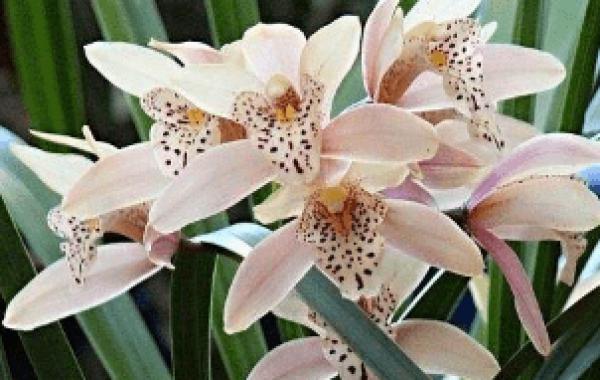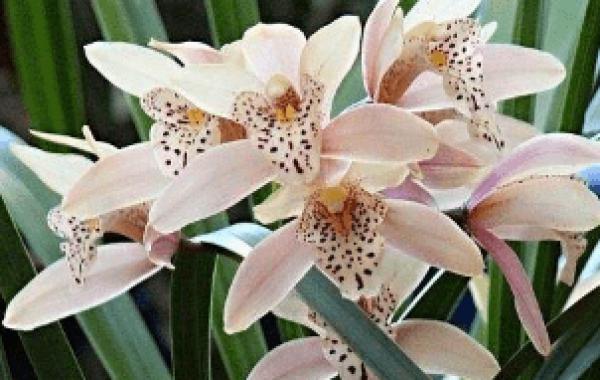Orchids fertilization needs attention to what? Orchids fertilizer considerations

Orchid fertilization is a hot issue that many orchid growers pay close attention to, which is directly related to the growth of orchids, so what matters should be paid attention to in the process of orchid fertilization? Now I would like to introduce to you.
The root of an orchid has no whisker root, and there are symbiotic bacteria in the root. Root fungi absorb mineral nutrients from the outside to supply orchids, while orchid root cells provide water and organic nutrients to root fungi, forming a symbiotic relationship in which they benefit and coexist with each other. But they must maintain a stable balance in order to grow luxuriantly. The preparation of suitable nutrient soil and proper fertilization to maintain the balance between them can promote the vigorous growth of orchids.
In the past, some people thought that when orchids grow in the mountains, Yahao can be maintained by white water and fresh breeze. There are also people who love orchids too deeply and act too hastily, often with highly efficient and high concentration of heavy fertilizer, resulting in counterproductive results. Therefore, we must seriously discuss the scientific and rational fertilization.
Types of fertilizers (which can be distinguished by their effective ingredients, properties and usage)
1. According to the effective components of fertilizer, there are mainly nitrogen fertilizer, phosphate fertilizer and potassium fertilizer.
1) nitrogen is not only the main component of nucleus and protein, but also the indispensable element of chlorophyll. Nitrogen fertilizer can make orchid leaves luxuriant and strong; on the contrary, the leaves are soft, not easy to sprout, and the reproduction rate is low.
2) phosphorus is also the main component of the nucleus, which directly affects cell division, chlorophyll formation and protein synthesis and transformation in plant cells, promotes flower bud differentiation and growth, and promotes large, bright and fragrant flowers.
3) potassium is directly involved in photosynthesis, which can not only make the cell physiology normal, but also related to the synthesis of sugars, protein and fat. Potash fertilizer can make the stem, leaf and root of orchid grow strong. Make the leaves tough, not easy to break, and enhance cold resistance and disease resistance, but also increase the fragrance of flowers.
4) in addition to the three main elements of nitrogen, phosphorus and potassium, orchids also need many trace elements such as calcium, magnesium, iron, boron and zinc, while the demand of nitrogen, phosphorus and potassium is large, which must be solved by fertilization, turning basin and changing soil.
2. According to the nature of fertilizer, it can be divided into organic fertilizer and inorganic fertilizer.
1) the organic fertilizer must be fully fermented before it is used, and the fermentation time must be at least one month. Organic fertilizer can improve soil structure, increase soil humus, make soil air permeability and water storage is good, its fertilizer effect is also long, and can gradually decompose long-term nutrients for orchid absorption.
2) Inorganic fertilizer, also known as chemical fertilizer, which has high nutrient content, clean and odorless, can be diluted immediately without fermentation, convenient and fast fertilizer effect, but short maintenance time, long-term use can make the soil structure bad.
The general art orchid opposes the use of chemical fertilizer. In fact, if orchids mainly use organic fertilizers, combined with the use of chemical fertilizers, the effect is still very good.
3. According to the use of fertilizer, it can be divided into base fertilizer and topdressing fertilizer.
1) topdressing is the fertilizer applied in the growing season of orchids after planting. In general, orchids are not turned over until 2-3 years after planting, and they must be replenished with nutrients, so they should be fertilized.
The time of fertilization: in the growing period of orchids in spring and summer, to make orchids grow strong and exuberant, more nitrogen fertilizer can be applied. If the leaf art variety, less nitrogen fertilizer or no application, the leaf color dark green will affect the leaf art appreciation effect. No fertilizer is applied when the temperature is higher than 30 ℃ in summer, because the temperature of the basin soil is higher, the water evaporates too quickly, and the concentration of residual fertilizer increases, which is harmful to the growth. If you fertilize too often in summer, it is easy to induce autumn buds, and the plants that grow up in the future are short and weak, and the spring buds of the following year will be suppressed. No fertilization is applied when the temperature is lower than 10 ℃, because it is in a semi-dormant state and does not absorb nutrients. Fertilizers are applied only when sunlight and temperature are suitable and photosynthesis is exuberant. Orchids are dormant in winter, let alone fertilizing.
Before the pseudo-bulb grows to semi-mature, the vegetative growth stage of orchid before and after the leaf bud is unearthed and the elongation stage is the vegetative growth stage of orchid. More nitrogen fertilizer should be applied, and phosphorus and potassium fertilizer should be less. Vegetative growth is followed by reproductive growth, and nutrients produced by photosynthesis are stored in pseudobulbs and leaves for flowering or bud growth. At this time, more phosphorus and potassium fertilizer is needed, and proper application of phosphorus and potassium fertilizer can promote the fullness and maturity of pseudobulbs, bud and flowering.
If the bluegrass leaves are light and yellow, and the plants are weak, most of them are caused by lack of fertilizer, they should be fertilized in time. But sometimes the leaves turn yellow because of too much sunshine. Diseased plants should not be fertilized, but should not be fertilized until the disease is cured. Strong orchid seedlings can be encouraged by applying more fertilizer. Ancient art orchids have experience: "thin orchids do not act suddenly." Fat orchid must not lose weight for a long time. It means that the thin orchid, which has always been unfertilized, cannot suddenly apply thick fertilizer, which cannot be absorbed and harmful. For orchids that are often fertilized, we can't stop fertilizing for a long time. In short, uneven weight is not good for orchids.
After each fertilization, fresh water must be irrigated the next morning to facilitate the absorption of orchids and prevent the orchid root from being hurt by improper concentration. It is generally not suitable to apply fertilizer before and after flowering.
Fertilization must be based on organic fertilizer, which can make the soil loose, good structure, and conducive to the growth of orchids. But also apply thin fertilizer frequently, that is, the previous experience "should be diligent and light, do not be sudden and thick", that is, today's people eat less and eat more. When applying, dilute the water and fertilizer appropriately, and then pour it into the rhizosphere with a spray can, so as not to pollute the orchid leaves.
Related
- Is the orchid suitable for indoor use? Is it good for the body?
- How to prevent the empty root of orchids?
- What to do after the crab claw orchid is withered?
- Why are the leaves of orchids always yellow? Fertilizing and watering.
- Can the root of the gentleman orchid be saved if it is rotten?
- Diagnosis and treatment of cotton-blowing beetle insects in Cymbidium
- There is a way for a gentleman's orchid to rot.
- What is the most suitable temperature and humidity for the orchid?
- How to raise a gentleman's orchid? Cultivation techniques of Cymbidium
- How to prepare the nutritive soil for the cultivation of Cymbidium



